We may not have the course you’re looking for. If you enquire or give us a call on +44 1344 203999 and speak to our training experts, we may still be able to help with your training requirements.
Training Outcomes Within Your Budget!
We ensure quality, budget-alignment, and timely delivery by our expert instructors.
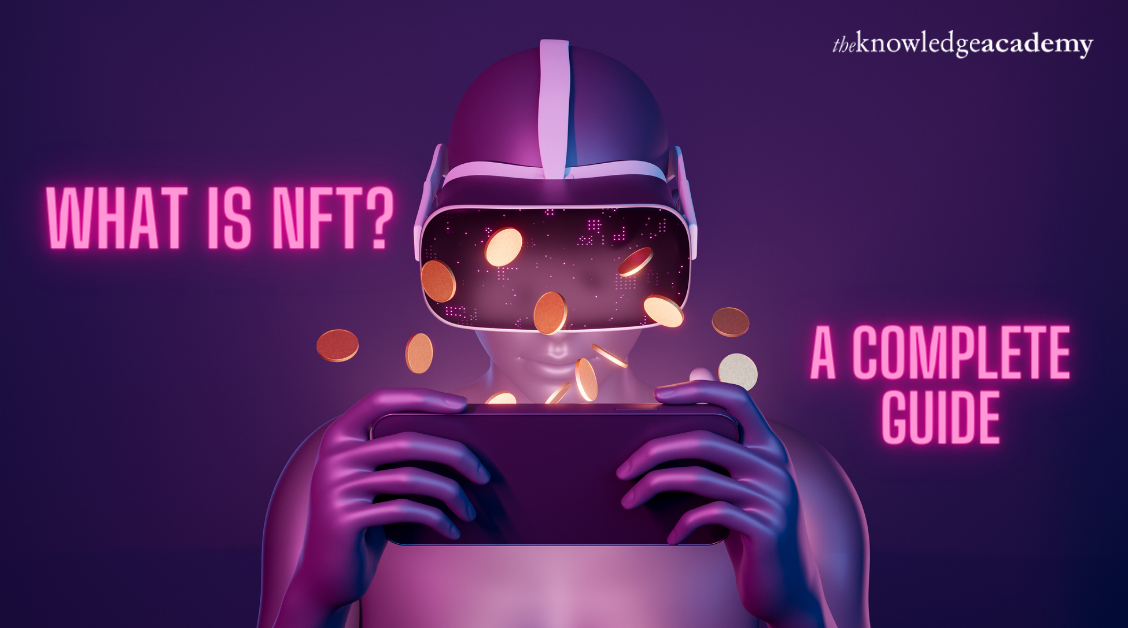
If you've been keeping up with the recent buzz in the tech world, you must have heard about NFTs. NFTs have been creating a buzz for quite some time now, with some getting sold for tens of millions of dollars. Beeple's Everydays: The First 5000 Days was sold for a whopping £57.9 million in 2021, and that's when the term NFT became a household name around the world.
Even very recently, Julian Assange and Pak's Clock was sold as an NFT for £44.1 million. It is a clock that tracks Assange's time in prison. It sounds a bit bizarre, doesn't it? Spending tens of millions of dollars on a digital artwork? But it has happened and isn't limited to expensive art. NFTs have also verged into the "reasonably priced" art section and gaining a lot of traction from everywhere around the world. Jack Dorsey, the founder of Twitter, sold his first Tweet for around £2.5 million.
Table of Contents
1) What is NFT? What does NFT stand for?
2) What is Blockchain, and what is NFT in Blockchain?
3) So, how does NFT work?
4) Some examples of NFT
5) Are NFTs useful?
6) What is NFT in Cryptocurrency?
7) Why are NFTs becoming so popular?
8) How do you buy NFTs?
9) Where should you buy NFTs from?
10) Conclusion
What is NFT? What does NFT stand for?
NFT stands for Non-Fungible Tokens.
Wait, what do you mean by ‘non-fungible’?
A non-fungible thing is something that can't be traded for something else. In the Blockchain world, a cryptocurrency can be traded, making it fungible, while NFTs cannot. Yes, NFTs are based on Blockchain. Remember when Bitcoin was introduced, and everybody wanted to know everything about it? For a long time, the world went crazy about investing in cryptocurrency, with various people releasing guides on how to go about it and even more people trying to understand what Blockchain was but ending up being just as clueless as ever.
Now, we have NFTs. Non-Fungible Tokens that work on Blockchain technology. Just like Bitcoin was the digital answer to money, NFTs are the digital answer to art or collectables.
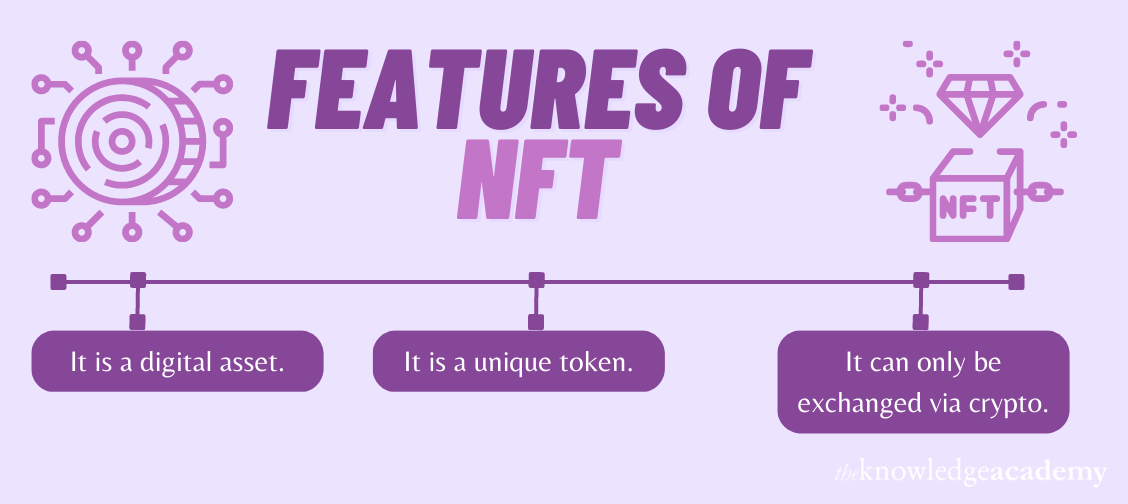
a) It is a digital asset – NFTs are the internet's answer to collectables like art, games, music, etc. A digital certificate is provided through Blockchain to ensure its authenticity.
b) It is a unique token – NFTs cannot be changed or manipulated.
c) NFTs can only be exchanged via cryptocurrency – Dedicated sites facilitate the exchange of NFTs through cryptocurrency, like Bitcoin or Ethereum.
Learn more about NFTs by diving deep into the world of Blockchain Technology. Register for our Blockchain Training Courses today!
What is Blockchain, and what is NFT in Blockchain?
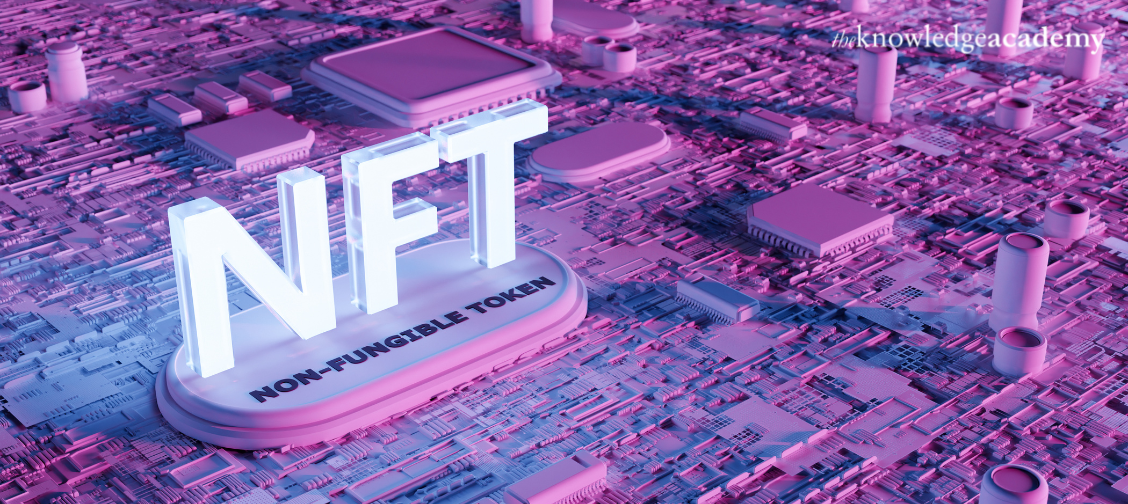
One of the most significant game-changing evolution of the 21st century, Blockchain technology has had a massive impact on almost every industry today. A Blockchain is a digital database that electronically stores data. The most well-known use of Blockchain is for preserving a secure and decentralised record of transactions in cryptocurrency systems like Bitcoin.
Well, they're complex, but blockchains can help store data without having to trust any entity to keep things secure. You can read more on Blockchain to clear any further doubts you may have. Still, when most people say "Blockchain," that's the kind of tech they're talking about.
There are also a lot of nuances about whether NFTs are on the Blockchain or not, which we'll dig into in a bit.
Cryptocurrencies are usually fungible just like physical money. For example, one bitcoin will always be equal in value to another, just like every pound bill of British currency has an implicit exchange value of £1. This proves cryptocurrencies as a secure transaction medium.
However, because of Blockchain's ability to store and publicly communicate transaction history, only some tokens or coins of a given cryptocurrency are the same. For example, people may pay a premium for owning a bitcoin that was previously owned by Elon Musk or a coin that had never been traded before. Similar to how an old penny might only be worth £0.01, collectors are willing to pay much more for something unique.
NFTs have been able to shift the crypto market by making each token irreplaceable. They digitally represent assets, and each token contains a non-transferable identity to differentiate amongst other tokens. They are also extensible, meaning you can combine one NFT with another to make another NFT.
So, how does NFT work?
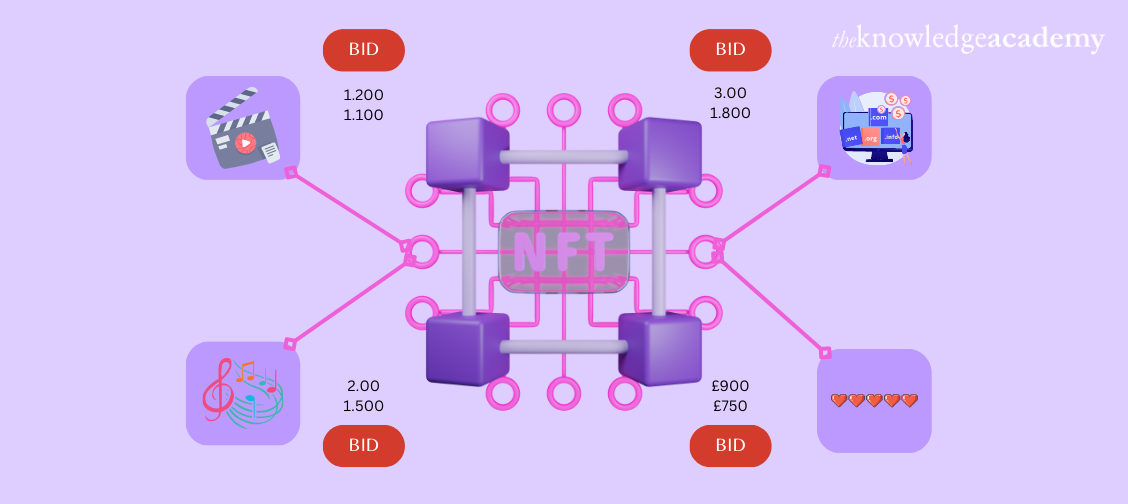
NFTs mostly belong to the Ethereum Blockchain. Ethereum is a public ledger, and it keeps a record of all transactions. The information of the transaction is stored on the Blockchain, and it is stored as a token. There is a value set for the NFT, which makes it easier to buy and sell it just like any other commodity.
Because NFT is based on Blockchain, the transaction data stored for the NFT is unique and secure. This makes the ownership verification and transfer process much simpler.
NFTs are unique crypto tokens that are managed on a Blockchain. Thus, Blockchain acts as the decentralised ledger that traces the ownership and transaction history of each NFT, which has a code and a unique ID, and other metadata that no other token can duplicate.
How do non fungible tokens work?
Creating NFTs can be done through contract enabled Blockchains with the help of appropriate tools and support. Ethereum was one of the first widely used EOS and NEO, and now it also includes NFT standards. The tokens and their Smart Contracts allow adding detailed information such as the owner's identity.
This process provides NFTs with the attributes of scarcity and royalties that make them attractive when coupled with digital media:
Scarcity
When we talk about scarcity, we mean that the owner gets to decide the scarcity of their assets. For example, let's take an example of a ticket to any sporting event or concert. The owner decides how many tickets are to be sold there. In the NFT token market, the creator can decide how many replicas should be there. So, these replicas are there with a slight difference in each one of them.
In another example of how to create non-fungible tokens, the owner can create an NFT token only once, making it a unique, rare collectable. In any case, each of the NFTs will have its unique identity, such as a bar code on every cloth or ticket that looks similar but uniquely different.
Royalties
NFTs are coded with software code (called smart contracts) that governs the prospects, such as verifying the ownership and managing the transferability of the NFTs. Also, NFTs can get programmed beyond the basics of ownership and transferability like any software application that incorporates a variety of applications and functionality (which also involves linking NFT to other digital assets).
For example, a Smart Contract could be created so that some NFTs automatically allocate a share of the amount paid for any sale of the NFT, that is, pay the royalties to the original owner.
Interested in knowing how NFTs work on Blockchain? You can learn that and so much more with our Blockchain Training Course!
Some examples of NFT
Here’s a closer look at some of the most expensive NFTs to give you a glimpse of what these Non-Fungible Tokens look like:
1) The Merge
The most expensive NFT to ever sell was Pak's 'The Merge'. The £77.2m price tag was a record for an artwork sold publicly by a living artist. The NFT was sold on Nifty Gateway to 28,893 collectors who purchased 312,686 units of mass (which were single NFTs). The starting price of these units was £483, which increased by £21 every six hours.
The NFT consists of three large white masses (dots) against a black background. The more mass buyers accumulated, the larger their mass would become. The NFT has a built-in scarcity mechanism that ensures the token supply decreases over time. Every Merge token which is transferred merges with the token of the recipient wallet, resulting in a higher mass value and a single token. Perhaps over time, this will result in just one final mass.
A built-in leaderboard for NFT holders allows them to follow the mass acquired by other collectors. The leaderboard's top 100 and top 5 will be rewarded with different style classes. The largest class possible is the Alpha class, awarded to the top collector. This dynamic set-up of the NFT sets it aside from other collections and is likely a large part of why it sold for such a high price. However, there is some controversy over whether this is the most expensive NFT ever to sell, as the funds were raised from almost 30,000 investors rather than a single person. Either way, we have included it as the most expensive NFT ever sold.
2) Everydays: First 5000 Days
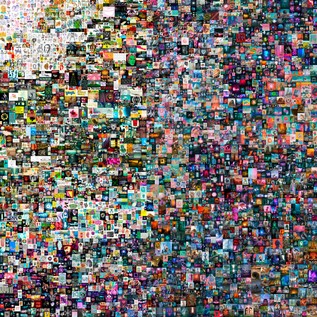
Everydays: First 5000 Days is another one of Beeples high grossing NFT projects. It is a collage of 5000 individual NFTs that Beeples created for his Everydays series. It sold for an astonishing £58 million (42.329 ETH) in 2021 at the Christies Auction house.
The NFT was sold to Singapore-based programmer Vignesh Sundaresan, who has made most of his money by investing in the crypto markets. He is also the founder of the Metapurse NFT project and is better known by his online pseudonym MetaKovan. This is the most expensive NFT ever sold to an individual investor.
The artwork is currently being displayed in an online gallery in the metaverse. This can be accessed via a web browser if you want to check it out!
3) Clock
The third most expensive NFT ‘Clock’ ever sold has a slightly unconventional origin. It was created to raise funds for Julian Assange's defence after he was controversially imprisoned in May 2019. Assange is currently imprisoned on charges of espionage against the US Government, mainly through association with the website he founded, WikiLeaks. The NFT is simply a clock depicting the number of days since Assange has been imprisoned.
The whopping £47m price tag was raised by over 10,000 supporters, each of whom owns a share of the NFT. 100% of the proceeds went to the Wau Holland Foundation, which supports Assange's defence.
The creator of the NFT is an anonymous artist named Pak. The anonymity of the artist – who refuses to reveal their identity in interviews – fits well with the cause it is raising money for. It has prompted many followers to take a second thought over the controversial case of Assange, in addition to freedom and access to information.
4) HUMAN ONE
HUMAN ONE is a digital/physical hybrid artwork created by Beeple. It sold for a record £24.2 million when auctioned off as part of Christie's 21st Century Evening Sale on 9 November 2021.
The cool thing about this NFT is that its artwork changes over time. Although Beeple doesn't own the art, he retains remote access and can update it constantly. The NFT depicts an astronaut walking through different backgrounds, which, as mentioned, change over time.
People explained that the inspiration for the piece came from experiments combining multiple TVs into different shapes and patterns. The unique finished product has created one of the most expensive NFTs ever!
5) CryptoPunk #5822
CryptoPunk #5822 is the most expensive CryptoPunk ever sold, racking up an astronomical $23m price tag. There has also been huge bidding and listing activity on the NFT. There have been multiple bids of over 1000 ETH (~£2.5m) throughout the token's lifecycle. However, these have all been denied by the owner. In addition, the owner 0xDeepak, has listed it for tens of thousands of ETHS on multiple occasions. However, these listings have yet to come to fruition. Recently, the owner transferred the NFT to an unidentified wallet named 7DDFFB and hasn't listed it since.
Learn how Bitcoins work and delve deeper into the cryptocurrency ecosystem with our Bitcoin and Cryptocurrency Course!
Are NFTs useful?
Well, the answer really depends on what you mean by useful. If by useful, you mean – are NFTs saving the world? The answer is probably not. But if the question is more in terms of – are NFTs helping artists? You already have your answer. But let's break it down a little.
1) Digital Art/ Collectible/ Asset – With NFTs, digital creators get to take ownership of their work on a platform, and they get to publicise it. Content creators find it easier to sell their work on NFTs, increasing their sales.
2) Games – An exciting use of NFTs is within games. Game developers found a great way to use NFTs by reselling the in-game items that players buy for their characters. Now players can purchase these items as NFTs and resell them as soon as they're done with them.
3) Domain Names – With NFTs, you can make your domain name easier to remember. NFTs can make your website’s IP address easier on your memory and more valuable.
So NFTs aren't just another trend; they have proved themselves useful and are here to stay.
What is NFT in Cryptocurrency?
NFT works on Blockchain technology which makes it pretty similar to Cryptocurrencies. But there are actually a lot of differences between the two.
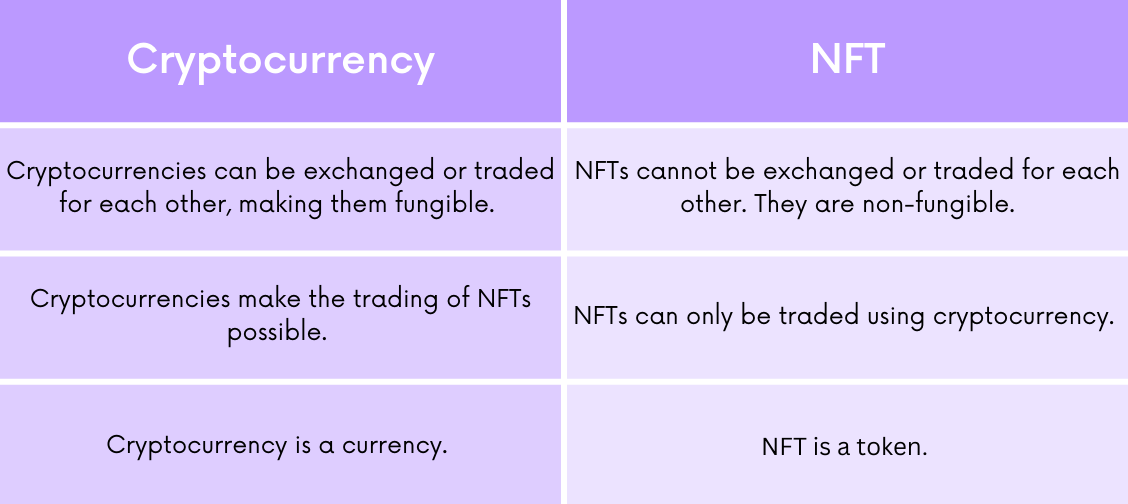
Why are NFTs becoming so popular?
There are various factors that have contributed to the rising popularity of NFTs. They have actually been around since 2015. A major and most obvious share goes to the rise in the popularity of crypto. As cryptocurrency has risen in popularity and been accepted worldwide, Blockchain has also received a lot of mainstream spotlights. This brought forth the possibilities of Blockchain, and NFTs couldn't be left far behind.
What started as a trend fructified into people becoming borderline obsessed with owning unique content on digital platforms. This has also made NFTs a type of investment. Buyers gain ownership of the NFT, which can still circulate online. It helps ensure that the NFT still gets enough clout and keeps increasing in value. So finally, when the NFT is sold, it brings more value to the seller. The revenue is split between the original creator, who still receives 10 per cent of the royalties, and the platform, and the seller, who gets the rest of the cut.
NFTs have allowed creators a steady revenue stream as the assets are bought and sold over time. Not that it wasn't possible before; NFTs have just made this process more convenient. NFTs contain secure information about the original creator, which makes it easier to verify the asset's authenticity and trace it back to the creator. Because of this, the art piece cannot be duplicated.
How do you buy NFTs?
After all of the above information, it’s natural for you to be curious about buying NFTs. So, let’s demystify the process for you. There are a few things you’ll need before you get to buying an NFT:
1) A digital wallet - If you're unfamiliar with the concept, a digital wallet is needed to store your cryptocurrency and NFTs.
2) Cryptocurrency - You can only buy an NFT through Cryptocurrencies, so you need to purchase some. You can check the Cryptocurrency your NFT provider accepts and buy that one accordingly.
Where should you buy NFTs from?
Now that you have your essentials, where should you buy an NFT? Here are some popular NFT marketplaces you can consider:
1) Rarible - A community-owned NFT marketplace, Rarible works with RARI tokens. All the active users receive RARI tokens, up to 75,000 RARI weekly. Digital creators can mint new NFTs to sell their works. Sneak peeks can display the collection with only the buyer getting the option
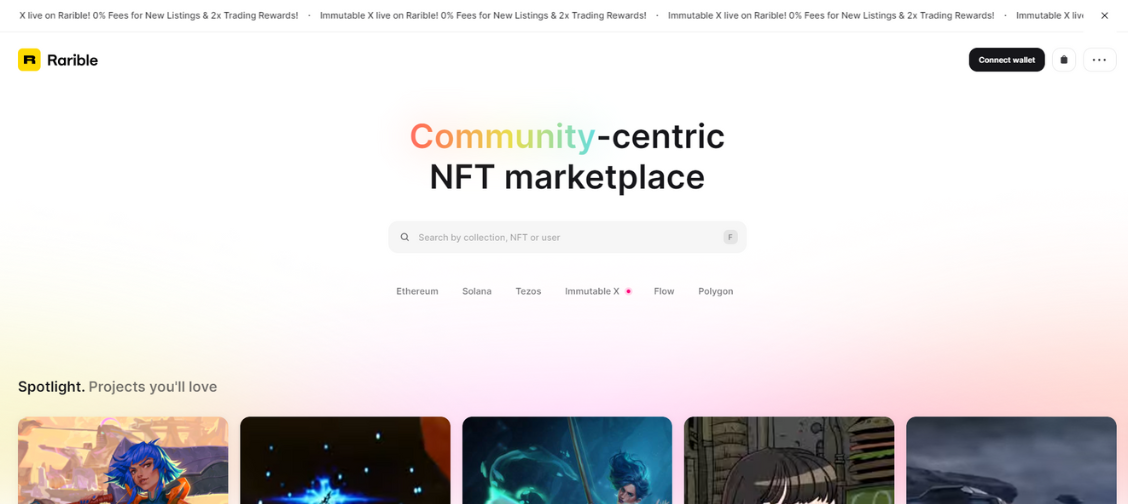
2) OpenSea - Possibly the largest NFT marketplace, OpenSea sells NFTs as art, domain names, sports, trading cards, collectables, etc. The platform has its minting tool through which creators can create their NFTs on Blockchain for free.
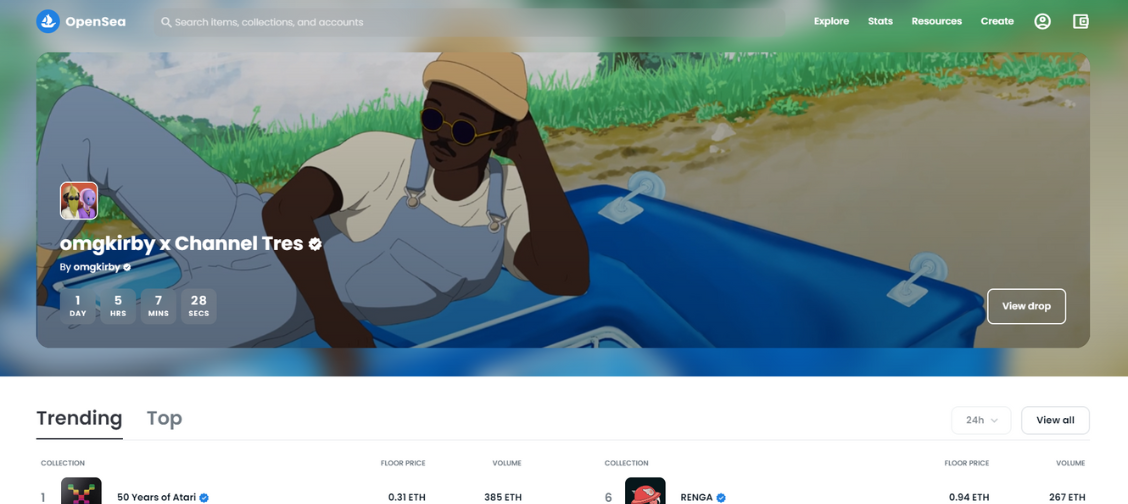
3) Foundation - Foundation has brought together digital creators, crypto enthusiasts and collectors.
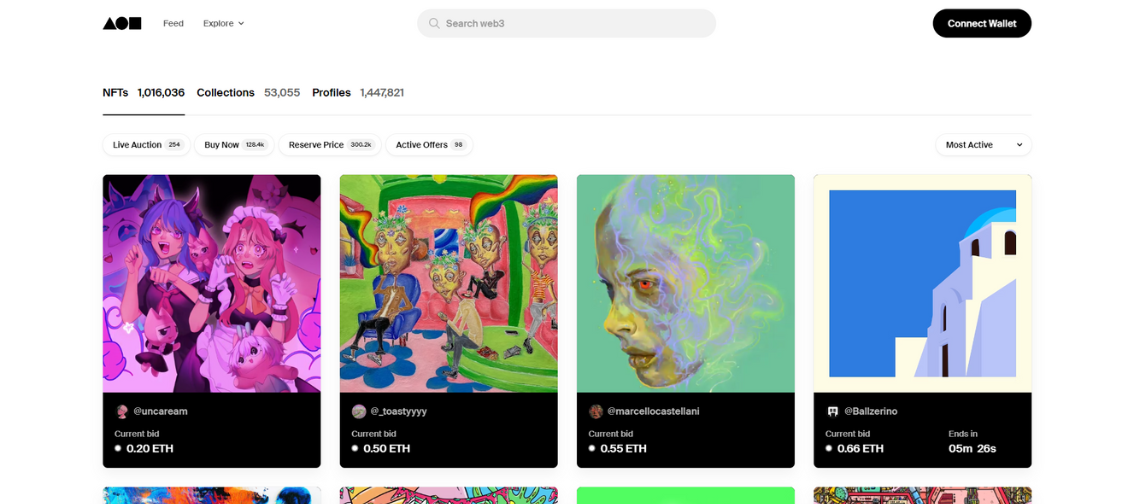
4) SuperRare - As the name suggests, SuperRare has fashioned itself as a platform that facilitates buying and selling unique digital assets only available as a single edition. The platform has moved forward and turned into a social network for creators and traders.
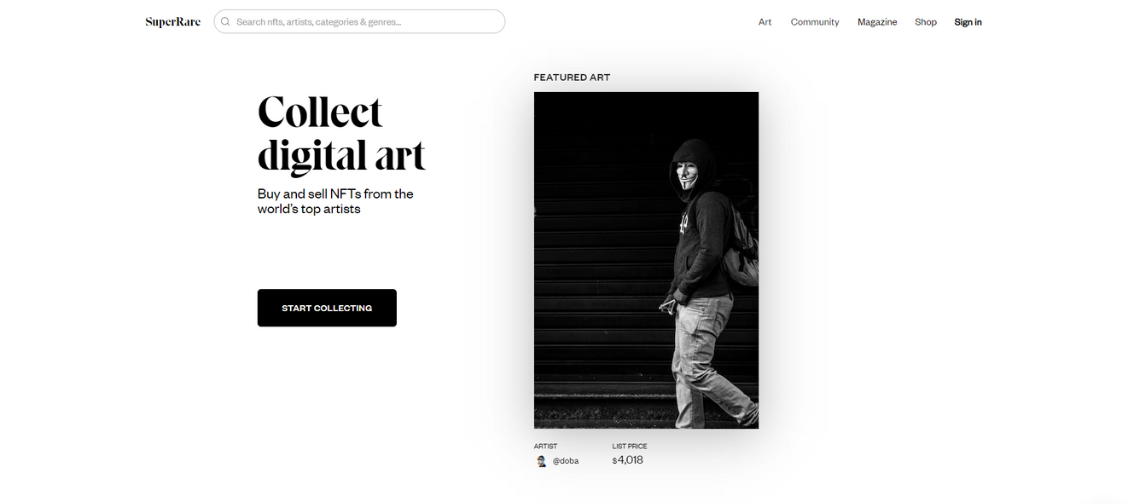
Conclusion
As complicated as the concept of NFT might seem, the truth is it's still in the very early stage. Rest assured, there are going to be many developments in the future. Even though many out there still haven't been able to wrap their minds around Blockchain technology completely, it will be a major driver of further technological advancements.
Get trained in the fundamentals of Blockchain and Ethereum. Join our Ethereum Developer Training today!
Frequently Asked Questions
Upcoming Advanced Technology Resources Batches & Dates
Date
 Blockchain Training Course
Blockchain Training Course
Thu 23rd May 2024
Thu 15th Aug 2024
Thu 21st Nov 2024









 Top Rated Course
Top Rated Course



 If you wish to make any changes to your course, please
If you wish to make any changes to your course, please


